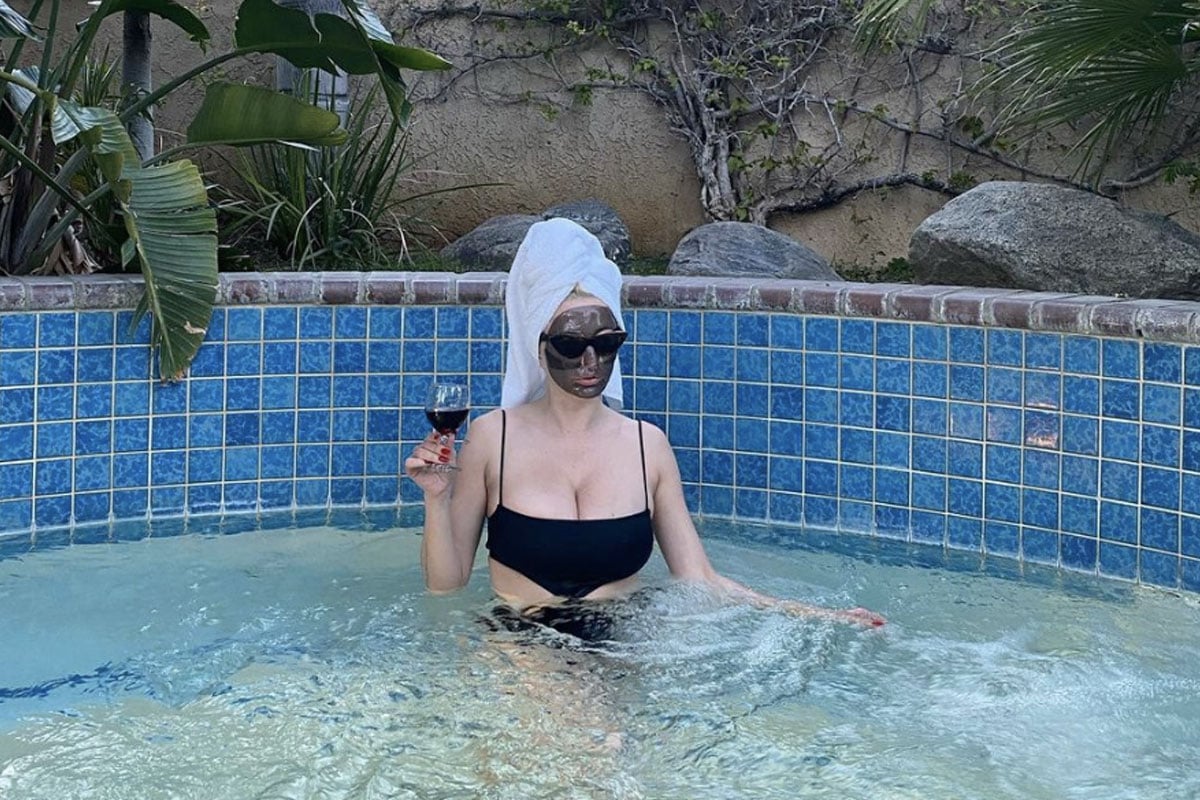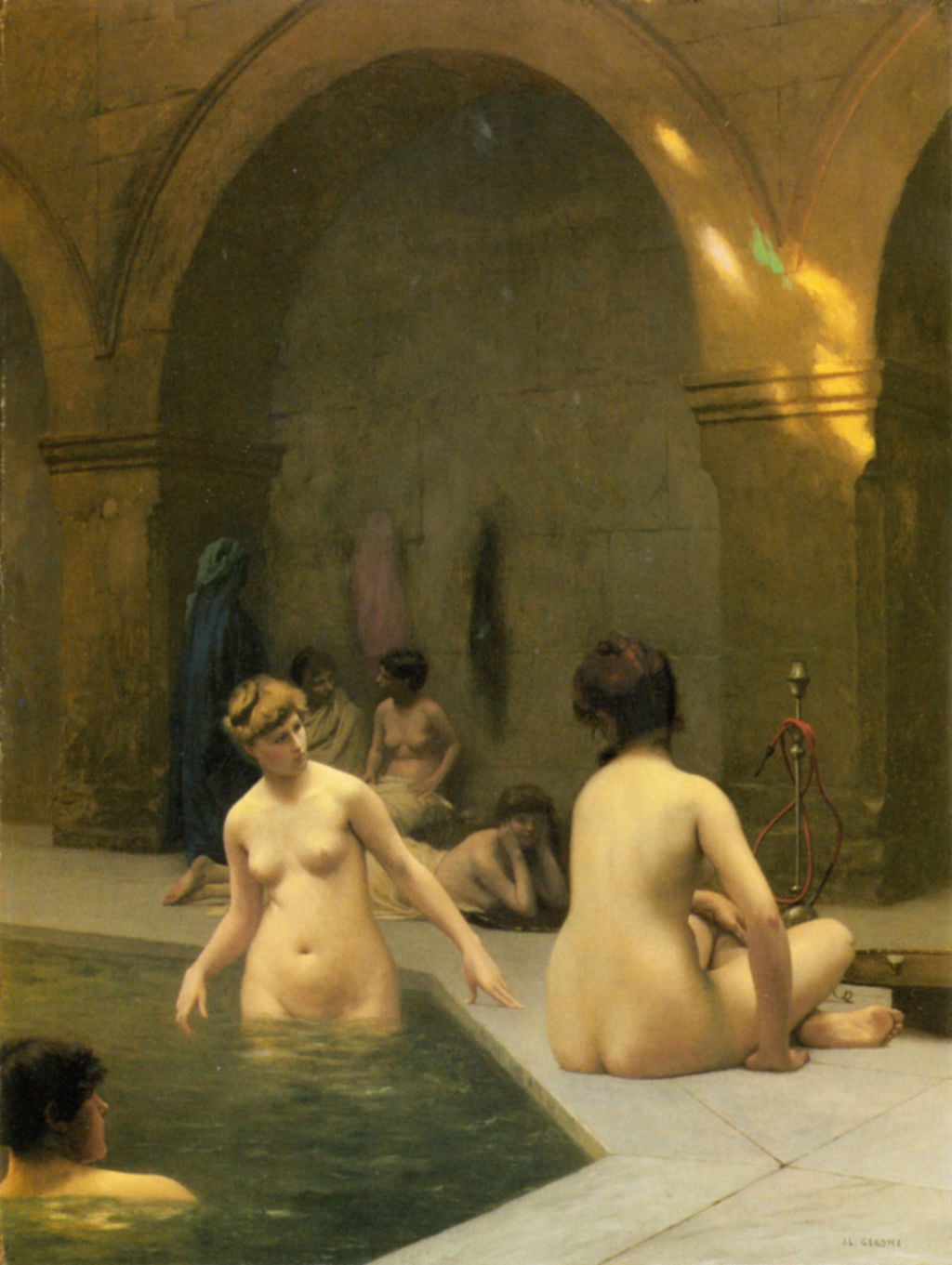
The Bathers, Jean Leon Gerome
By Tara Young
I've long been intrigued by how bathing scenes are depicted in art history; the ritual of bathing communally in otherworldly locations. It's a glimpse into an integral part of daily life in another time, as they relax, socialise or lounge by a pool. I think that is where my curiosity of bathhouses and natural beauty treatments stemmed from.
Bathing is a transformative ritual that has been an intrinsic part of the human experience since the beginning of time. Whether for religious purification, hygiene, business, naughtiness, relaxation or healing mind, body and spirit, communal bathing has long been cultivated within culture and tradition. It was an experience best enjoyed together – sometimes with up to 6000 other bathers.
My first bathhouse experience was in Hanoi, Vietnam in 2017. As we walked through the grand entrance, my friend and I were quickly whisked in one direction, while our partners went in another. I was nervous as we entered the locker room to strip and store our belongings, but when you're in the nude with your bestie at a bathhouse, strolling around with other women who couldn't care less, any insecurities instantly float away.
From the initial scrub-down and mineral barrel bath to the sauna, pool then massage table, it was an invigorating communal experience. I left feeling warm, calm and relaxed - before all four of us squeezed on a scooter and hit the busy streets of Hanoi, laughing our silly little heads off.
Here we explore the history of bathing and what it once looked like in different corners of the world before it was a rather swift, solo experience in the privacy of our own home.
Roman Baths
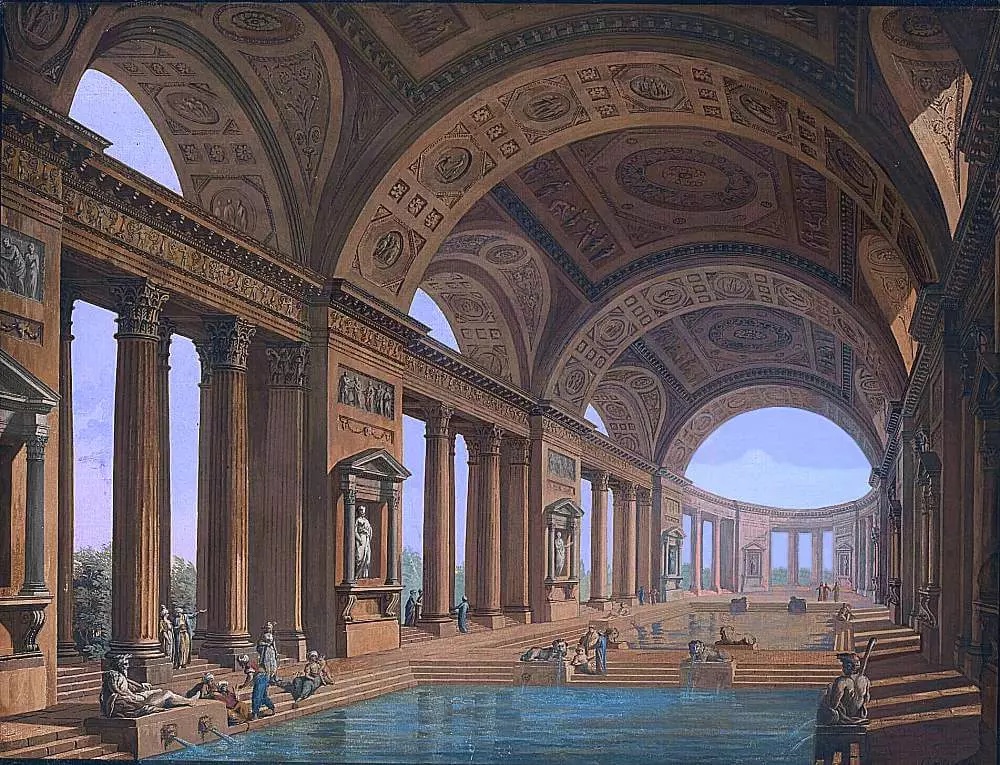
Roman baths and public bathing were a fundamental part of ancient Roman society. Accommodating up to 6000 people, they were an inclusive place to discuss politics, gossip with friends, host business meetings or rendezvous with sex workers, they were part of everyday life and a symbol of Rome itself.
Coinciding with the rest period at midday, bathers started their daily ritual at the Apodyterium, or dressing room, where they would undress, followed by the Palaestra, or Gymnasium to exercise and have their body oiled. Next up was the Frigidarium, or cold room containing a cold plunge bath, before they visited the Tepidarium, or warm room, to recover.
The final room was the Caldarium, a steamy hot room with a hot plunge bath or labrum. The oil would be scraped off by a servant using a strigil and they would visit each room again in the opposite order before getting dressed and heading home.
The warm water, steamy atmosphere, elaborate marble, the pleasant aroma of perfumed ointments, massage and public nudity, were a powerful stimulant for feelings of happiness, relaxation and well-being. Decorated with wall paintings, murals, and statues, bathing was an artistic daily ritual.
Turkish Baths
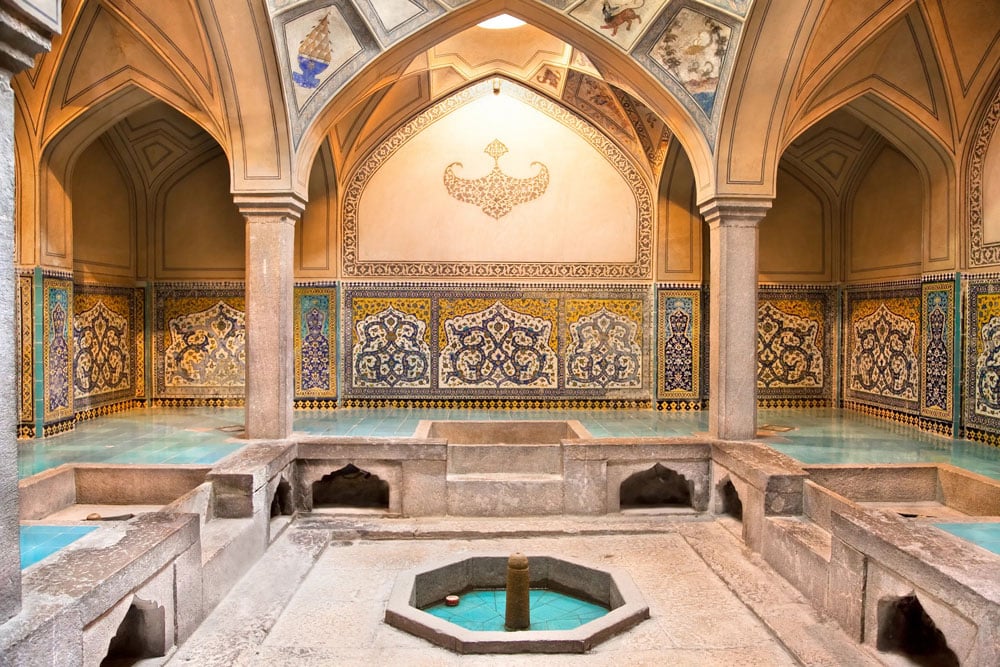
Turkish baths – hammams – were adopted from the practices of Roman bathing around 600 AD. They became firmly embedded in Muslim culture as a place to cleanse before prayer. As they grew in popularity, Hammams were included in the celebration of major life events with bathing rituals incorporated into birth and wedding ceremonies.
Bathers would remove their clothing, and wrap themselves in a towel before entering the hot steamy room to relax. Instead of soaking in a pool, they would douse themselves with water flowing from taps while sitting on heated marble benches.
Traditionally, Women's hammams played a special role in society. It was the only place where a woman could go without her father or husband. Women from urban and rural areas of the country come together, regardless of their religious views to socialise, for entertainment, to eat and to do their makeup.
The Turkish bath or Hammam is a noteworthy part of Islamic architecture. They were designed to be luxurious and comfortable and included a variety of amenities, such as a marble fit-out, open-air courtyards, and ornamental fountains. They were typically octagonal or square-shaped rooms with a large domed ceiling and marble or tiled stone walls and colourful mosaic tile floors.
The Russian Banya

The banya was firmly established in the Slavic culture by 900 and has always been accessible to all. Beginning in people’s homes, Russian banya eventually developed into communal bathing in larger buildings, becoming a social event. Whole families and even villages bathed together, men, women, and children in the same area and guests were offered a banya as a symbol of hospitality.
It's customary to exchange light lashings with friends or other guests using veniks, made out of birch, juniper, oak, eucalyptus, nettle, and pine. After soaking in hot water, the venik is used to lightly lash the body, massaging it and releasing essential oils from the plants. The water left from soaking the venik is then used to rinse the hair and skin.
In the past, women gave birth in banyas, with midwives trained to deliver babies inside. Couples visited a banya when they married, and it was customary for Russian grooms to carry their new bride over the banya threshold to avoid birth complications.
In Slavic mythology, banyas were inhabited by a spirit called the bannik, thought to be moody and evil. Rituals including gifts and offerings, were used to soften the bannik's heart. Banyas were considered to be a magical place where fire, earth, water, and air elements came together, creating a cleansing and spiritual experience.
Ancient Egyptian Baths

Ancient Egyptian baths (also: rasul/rhassoul) were treatment spaces designed around a steam room. These were elaborate, two-story buildings made of natural stone with a steam room, a swimming pool for contrast bathing, and a gym. The steam room was used to sit and absorb the water from the steam while getting therapeutic massages. Instead of soap, a mixture of beeswax and water was used to treat the skin.
Bathing methods during this time were public, with some division of men and women but often everyone would bathe in the same area. Used mainly for hygiene purposes, Ancient Egyptians also found that they were closer to their gods when they were bathing. There was a sense of spirituality when using warm waters to cleanse, adding aromatherapy to the regime with oils and flowers to feel a deeper connection with their religion.
Japanese Onsen
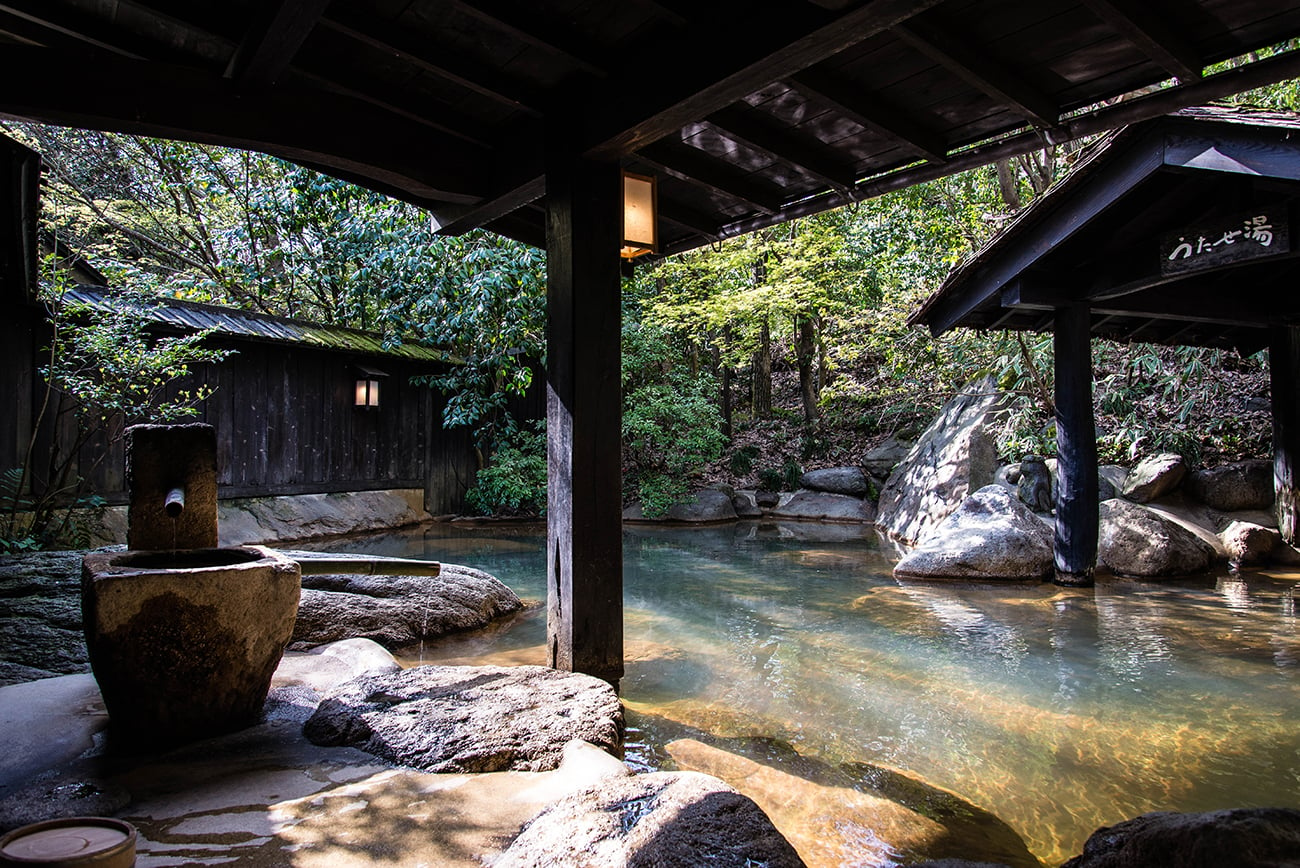
With over 27,000 natural hot spring sources, Japan has a rich history and culture of communal bathing dating back centuries. Japanese onsen are natural hot springs, born from the country’s plentiful volcanic activity. Historically a luxury reserved for the elite, the practice of soaking in these thermal baths for healing, spirituality and rejuvenation stems back to the 500s.
Mystical and holy attributes, the onsen waters’ healing properties are said to include refreshed skin, improved sleep, and relief from numerous physical ailments thanks to the minerals such as sulphur, iron, calcium, and magnesium that are commonly found in Japanese waters. A particular onsen may have several different baths each containing water with a different mineral content.
Traditionally, onsens were located outdoors using natural hot water from geothermal heated springs where men and women bathed together. Since Japan opened its doors to the West during the Meiji era, men and women have had separate baths, with some rural areas having set times for mixed bathing.
The practice of communal bathing or hada no tsukiai (“naked communication with others”) became widespread at public baths known as sento. Serving as an important mode for daily social interaction in busy urban areas.
Korean Bathhouses
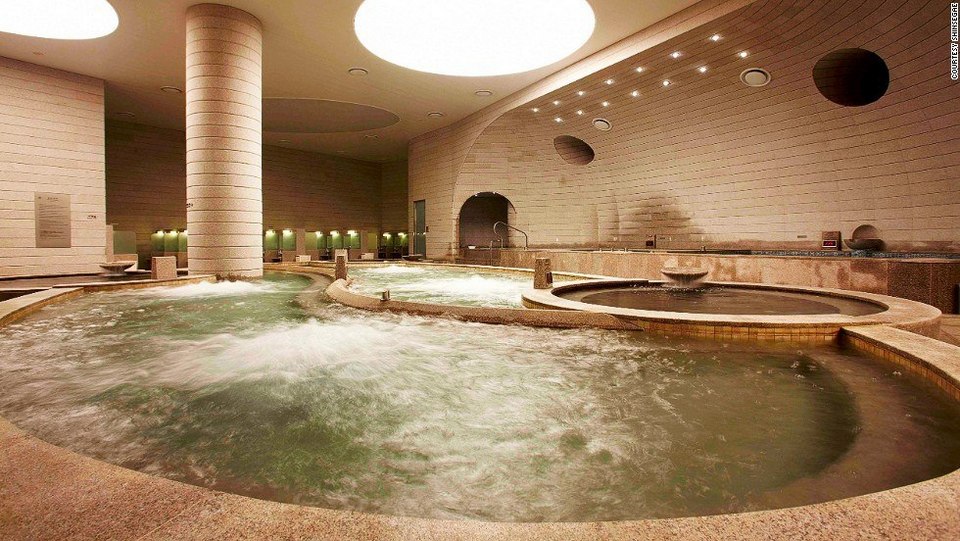
The Korean hot bath culture revolves primarily around Jjimjilbangs and Mogyoktangs. More than just places to cleanse, they play an integral role in Korean social life. Families and friends visit together, and it’s common for people to scrub each other’s backs as a sign of intimacy and trust.
The hot baths are believed to offer health benefits, such as improving circulation, relieving muscle tension, and promoting skin health. The practice of alternating between hot and cold baths is thought to enhance these benefits.
Dating back to the 15th century, there were kiln sauna-like facilities where priests would heal sick people. Known as Hanjeung, these facilities also included areas where one could wash off with warm or cold water before returning to the sauna, as well as common areas, where people could have a drink of water or tea.
Today, many Korean spas are open 24 hours a day and feature a variety of saunas and rooms (including sleeping and TV rooms), as well as services like body scrubs and massages. Many of the saunas are hot kilns used for charcoal production. The wet areas of Korean bathhouses are sex-segregated, and full nudity is the norm.
Native American Sweat Lodge

For many indigenous tribes of North America, sweat lodges serve as places of purification, spiritual renewal, and healing. They hold deep historical roots and cultural significance in communities such as the Lakota, Navajo, and Ojibwe.
Guided by a leader, participants in the sweat ritual gather inside a dark, dome-shaped hut or tent, where a pile of heated rocks lies in the middle. The structure is seen not just as a physical space but as a sacred place that symbolizes the womb of Mother Earth, fostering an intimate connection between participants and nature. Unlike other bathhouses, sweat lodge rituals can last up to several hours with multiple 30-minute rounds and breaks in between to let the outside air in and drink water.
Traditionally, the sweat lodge was restricted to males, and only they were allowed to lead; however today, women usually participate in the ceremony in a separate lodge or at another time.
